Gunnery Sergeant William Thomas MacSparran
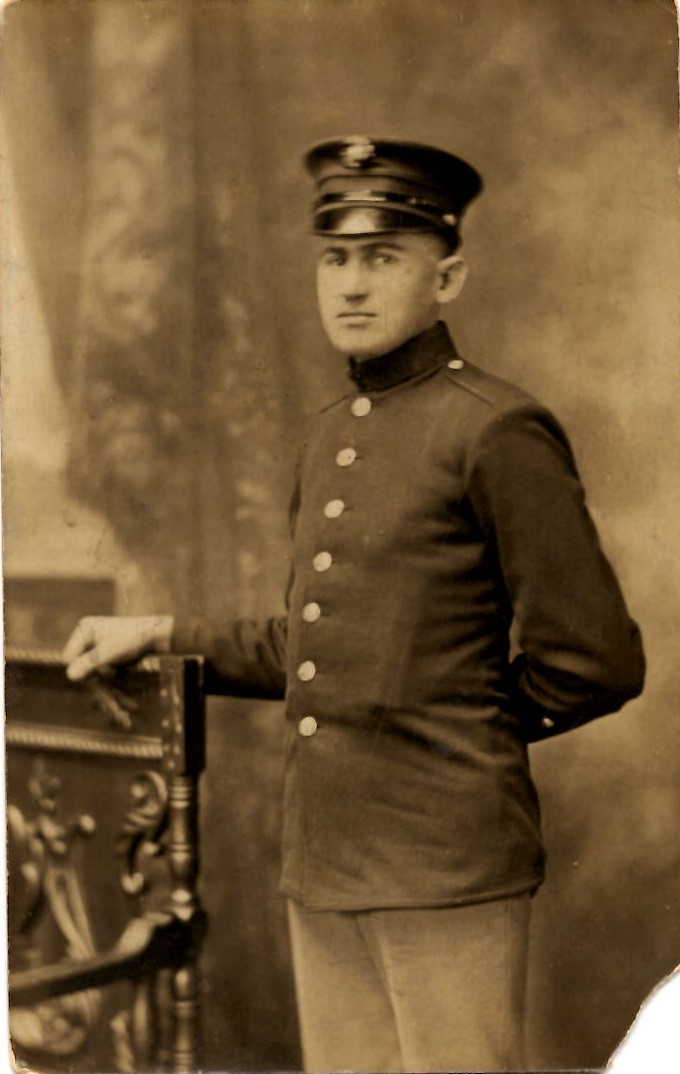
- Unit: 18th Company, 2nd Battalion, 5th Regiment
- Service Number: 4604282
- Date of Birth: February 28, 1889
- Entered the Military: July 22, 1913
- Date of Death: October 31, 1918
- Hometown: Westerly, Rhode Island
- Place of Death: Fleury-sur-Aire, Meuse, France
- Award(s): Meuse-Argonne Battle Clasp, a Defensive Sector Clasp, and two Bronze Stars
- Cemetery: Plot H, Row 3, Grave 28. Meuse-Argonne American Cemetery, Romagne-Sous-Montfaucon, France
2024/2025
Early Life
William Thomas MacSparran was born on February 28, 1887, in the small town of Westerly, Rhode Island. His father, William James MacSparran, immigrated to the United States in 1877 and joined the U.S. Navy in 1881. He married Ida Bellamy, a daughter of Irish immigrants who settled in Lowell, Massachusetts, during his enlistment. The pair welcomed triplets William, George, and Ida, but their mother died from complications a few days later. Their maternal grandparents cared for them for a time before William James, William Thomas, and George moved to Philadelphia, Pennsylvania. Ida, named for her mother, stayed in Rhode Island.
William James remarried in 1888. His second wife, Elizabeth Waters, was also an Irish immigrant; the pair had four children. After his time in the military, William James became a police officer before working as a machinist. When William Thomas was old enough, he, too, got a job in local industry as a bridge worker until 1913.

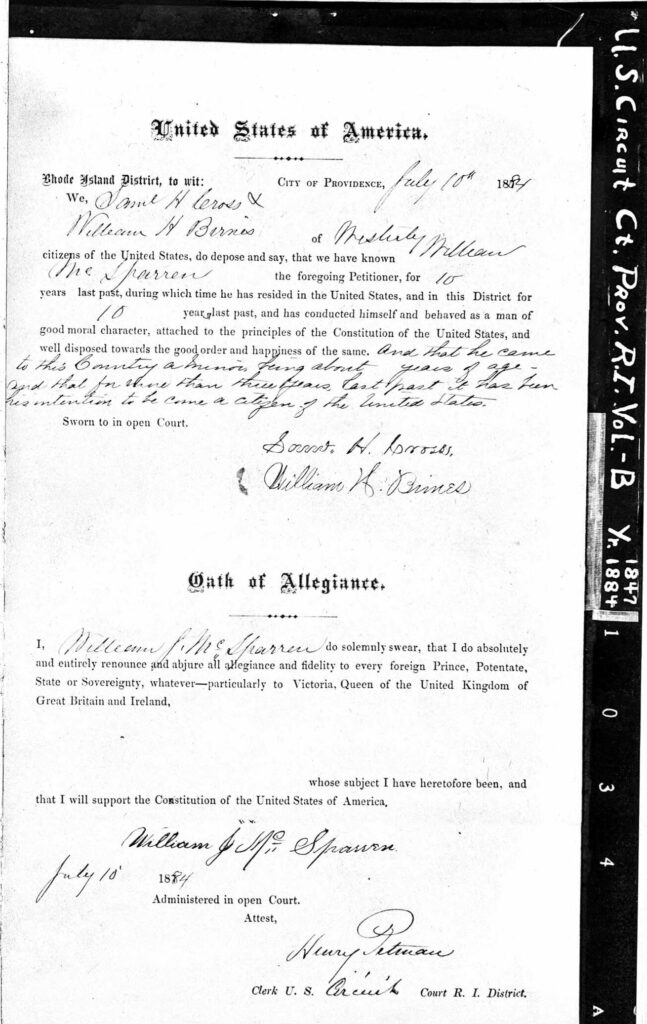
Homefront
William MacSparran spent his formative years in Westerly, Rhode Island, and moved to Philadelphia when he was old enough to work. Westerly was established in 1661 on land historically inhabited by the Narragansett tribe. The town’s proximity to the river and ocean made it a prime location for the rapid growth of industry that followed. The Industrial Revolution and the rapid influx of European immigrants after the Civil War cemented Westerly’s reputation for producing various products, especially granite. The area was also rural enough that dairy farming was a successful venture for those with agricultural skills.
During the war, some of the existing manufacturers ramped up their production of military goods, while others pivoted to new products entirely. For example, Gorham Manufacturing Company, which normally made sterling silver and bronze jewelry and goods, made hand grenades. Foundries pivoted to producing bullets and other munitions.
MacSparran’s expertise as a bridge worker led him and his father south to find work in Birmingham, Alabama, and then on to the Panama Canal. MacSparran worked there until July 22, 1913, when he followed in his father’s military footsteps and enlisted in the U.S. Marine Corps in Norfolk, Virginia. He was then sent to Philadelphia to start training.
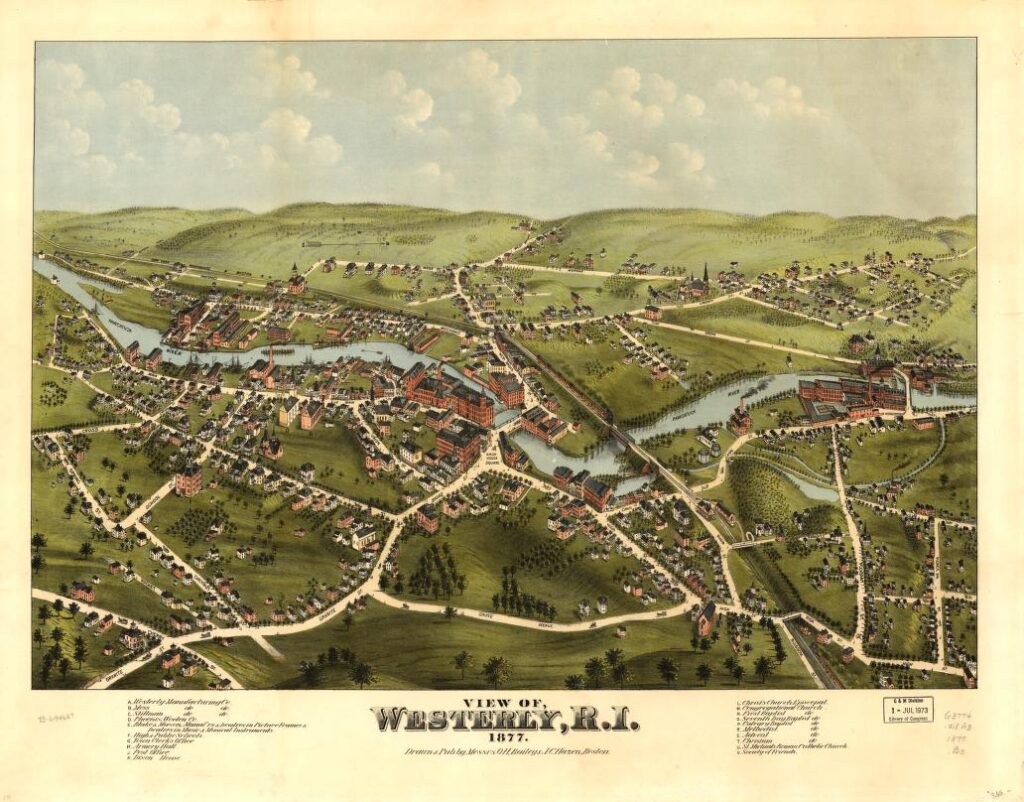
Military Experience
Pre-war Combat
Private MacSparran received training in Philadelphia and at Culebra Island, a naval training station in Puerto Rico. Culebra’s location made it ideal for practicing military operations, including amphibious assaults, bombing runs, and live-fire exercises. From there, MacSparran was sent to Vera Cruz, Mexico, in April 1914, aboard the USS Hancock as part of the 5th Company, 1st Regiment, 1st Brigade. Increased German presence and internal political turmoil in Mexico were causes for concern for the U.S. government at this time.
MacSparran’s next significant posting was in Haiti from August to October 1915. President Woodrow Wilson sent the Marines to maintain order after the assassination of President Jean Vilbrun Guillaume Sam. Wilson also moved half a million dollars to New York to control the bank in Haiti as an added measure, leading many scholars to point out that U.S. interest in banking was the priority over the Haitian people. After months of conflict, the Haitian-American Treaty of 1915 was signed.
Throughout 1916, MacSparran was stationed aboard the USS Cincinnati, USS Memphis, USS Minnesota, and USS Connecticut. That year, he was promoted to corporal. In 1917, he was promoted to sergeant and decided to re-enlist for another two years of service. After re-enlisting in 1918, MacSparran prepared for overseas deployment at Quantico, Virginia. On July 15, 1918, he joined Company B, 3rd Separate Battalion, and by August 12, 1918, he was aboard the USS Henderson headed for France.
European Combat
On August 26, 1918, the USS Henderson arrived in France and the Marines were tasked to serve with the U.S. Army, a typical assignment for U.S. Marines at the time. In October 1918, he was promoted again to gunnery sergeant. He was assigned to the 18th Company, 2nd Battalion, 5th Regiment, 2nd Division, American Expeditionary Forces (AEF) to serve alongside French forces in the Meuse-Argonne campaign.
The unit had been in France for a year by the time MacSparran made it to the front lines. In June 1917, the unit landed in France to fight in the Battle of Belleau Wood, a 25-day conflict. It was the closest Germany came to Paris during the war, but AEF troops helped secure a French victory on the Western Front. In July, they moved to Soisson to fight a two-day battle from July 18 to 20. This battle allowed France to regain all the ground it had lost in the previous battle and keep Paris from being captured by Germany.
At the end of September 1918, the AEF started its most significant push to end the war—the Meuse-Argonne Offensive. This was the largest campaign for the AEF and a major success in bringing about the war’s end. Only 11 days before the fighting ended, MacSparran died of Spanish influenza.
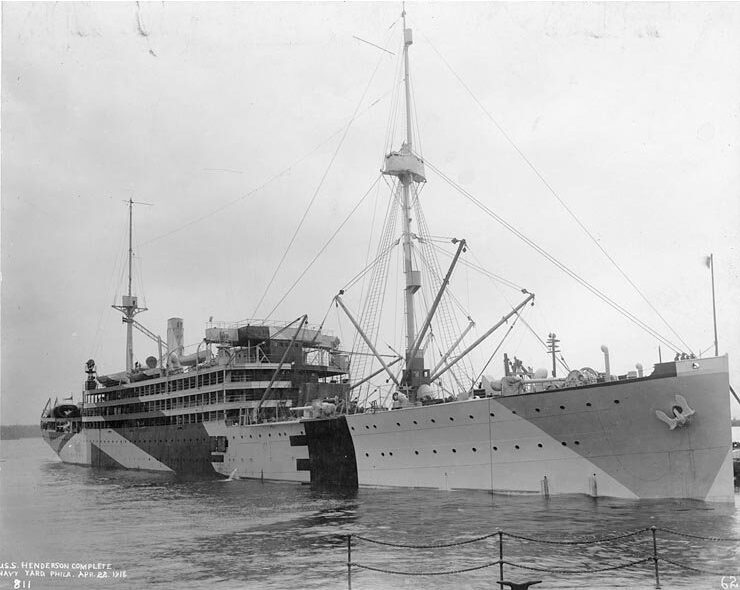
Commemoration
Sergeant William Thomas MacSparran was awarded a Meuse-Argonne Battle Clasp, a Defensive Sector Clasp, and two Bronze Stars for his service in Haiti and France. These honors were sent to his brother George, his next of kin. George also received a life insurance policy that William kept current during his time in the military. Because MacSparran enlisted from Birmingham, Alabama, that state was engraved on his marker instead of his home state of Rhode Island.
MacSparran is buried at Meuse-Argonne American Cemetery in Romagne-Sous-Montfaucon, France.
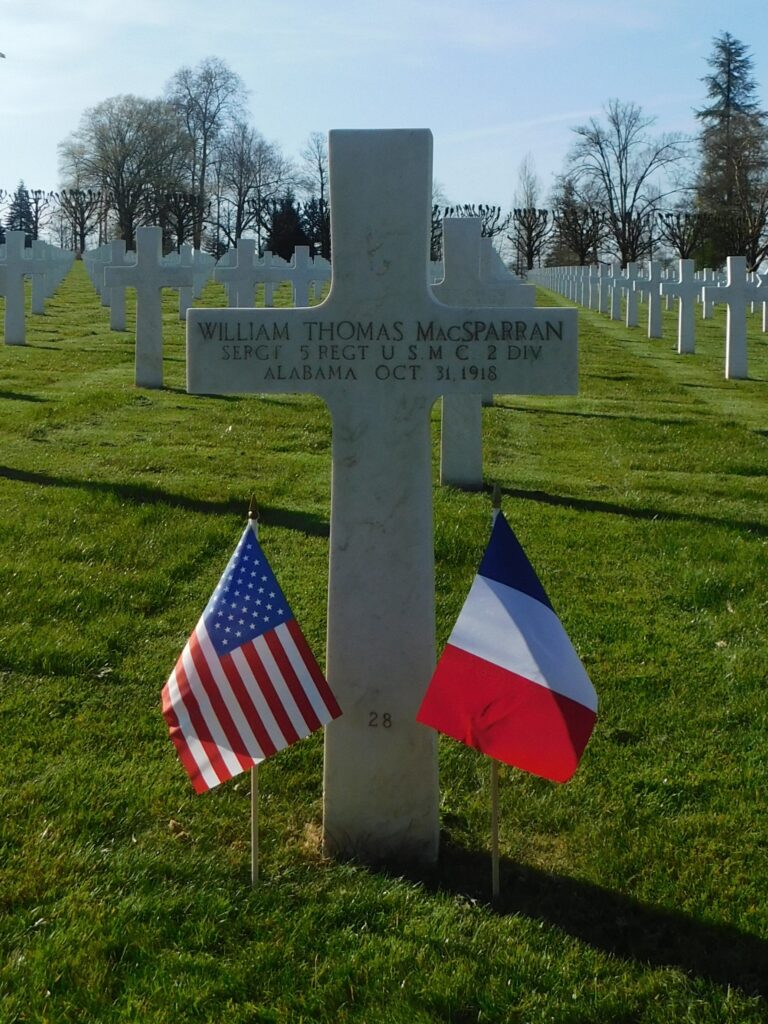
Bibliography
Primary Sources
Bailey, O. H, and J. C Hazen. View of Westerly, R.I. Boston, 1877. Map. Library of Congress (73694687). https://www.loc.gov/item/73694687/.
Catherine MacSparran. Rhode Island, U.S., Vital Extracts, 1636-1899. Digital images. https://ancestry.com.
Elizabeth MacSparran. New York, U.S., Arriving Passenger and Crew Lists (including Castle Garden and Ellis Island), 1820-1957. Digital images. https://ancestry.com.
George F. MacSparran. Pennsylvania, U.S., Death Certificates, 1906-1971. Digital images. https://ancestry.com.
James Harold MacSparran. Pennsylvania, U.S., Death Certificates, 1906-1971. Digital images. https://ancestry.com.
Massachusetts. Middlesex County. 1870 U.S. federal census. Digital images. https://ancestry.com.
“News of the Morning,” Fall River Daily Evening News [Fall River, MA], May 2, 1887. Newspapers.com (589975379).
Rhode Island. Westerly County. 1880 U.S. federal census. Digital images. https://ancestry.com.
Sanborn Map Company. Sanborn Fire Insurance Map from Westerly, Washington County, Rhode Island. Map. February 1885. Library of Congress. https://www.loc.gov/item/sanborn08106_001/.
Sanborn Map Company. Sanborn Fire Insurance Map from Westerly, Washington County, Rhode Island. Map. November 1912. Library of Congress. https://www.loc.gov/item/sanborn08106_006/.
USS Henderson. Photograph. April 22, 1918. U.S. Naval History and Heritage Command (NH-53506). https://www.history.navy.mil/content/history/nhhc/our-collections/photography/numerical-list-of-images/nhhc-series/nh-series/NH-53000/NH-53506.html.
William MacSparran. U.S., Marine Corps Muster Rolls, 1798-1958. Digital images. https://ancestry.com.
William J. MacSparran. Rhode Island, U.S., State and Federal Naturalization Records, 1802-1945. Digital images. https://ancestry.com.
William J. MacSparran. Rhode Island, U.S., State Censuses, 1865-1935. Digital images. https://ancestry.com.
William J. MacSparran. U.S., Naval Enlistment Records, 1855-1891. Digital images. https://ancestry.com.
William T. MacSparran. Headstone and Interment Records for U.S. Military Cemeteries on Foreign Soil, 1942-1949. Digital images. https://ancestry.com.
William Thomas MacSparran. Burial Case File. National Archives and Records Administration – St. Louis.
William Thomas MacSparran. Official Military Personnel File. National Archives and Records Administration – St. Louis.
William Thomas MacSparran. Pennsylvania, U.S., Episcopal Diocese of Pennsylvania Church Records, 1759-1972. Digital images. https://ancestry.com.
Wm. Thomas MacSparran. Rhode Island, U.S., Birth Registrations 1846-1921. Digital images. https://ancestry.com.
Secondary Sources
“2nd Battalion, 5th Marines.” First Marine Division. Accessed January 31, 2025. https://www.1stmardiv.marines.mil/Units/5TH-MARINE-REGT/2nd-Battalion/.
“Advancing Through The Ranks.” Marine Corps. Accessed January 22, 2025. https://www.marines.com/about-the-marine-corps/roles/.
Blessing, Ryan. “An Industrious Lot: Westerly history dotted with iconic businesses.” The Westerly Sun [Westerly, RI], January 3, 2024. https://www.thewesterlysun.com/news/westerly/an-industrious-lot-westerly-history-dotted-with-iconic-businesses/article_934af44e-0c83-11e9-818b-9f56d34bb99c.html.
“Annuccilli: Why Did They Settle In Rhode Island?” Go Local Prov. Accessed January 31, 2025. https://www.golocalprov.com/news/iannuccilli-why-did-they-settle-in-rhode-island.
“Guns of the ‘Devil Dogs’: U.S. Marine Corps Small Arms of WWI.” The United States World War One Centennial Commission. Accessed February 28, 2025. https://www.worldwar1centennial.org/index.php/communicate/press-media/wwi-centennial-news/3044-guns-of-the-devil-dogs-u-s-marine-corps-small-arms-of-world-war-i.html.
“Ida E. Bellamy MacSparran.” Find a Grave. Updated June 8, 2019. Accessed January 3, 2024. https://www.findagrave.com/memorial/199891673/ida_e_macsparran.
“Italian emigration to one Rhode Island town.” Vita Brevis, American Ancestors. Updated July 22, 2016. Accessed January 31, 2025. https://vitabrevis.americanancestors.org/2016/07/italian-emigration-one-rhode-island-town.
“Leathernecks at Soissons.” Naval History 19 (no. 6), December 2005. https://www.usni.org/magazines/naval-history-magazine/2005/december/leathernecks-soissons.
“The Meuse-Argonne Offensive.” National Archives and Records Administration. Accessed February 25, 2025. https://www.archives.gov/research/military/ww1/meuse-argonne.
Millett, Allan Reed. Semper Fidelis: The History of the United States Marine Corps. Macmillan, 1980. https://archive.org/details/semperfidelishis0000mill/page/n5/mode/2up.
Morgan, Thomas J. “WWI 100 Years: Industrious R.I. turns to war effort.” The Providence Journal [Providence, RI], July 23, 2014. https://www.providencejournal.com/story/news/2014/07/24/20140723-wwi-100-years-ago-industrious-r-i-turns-to-war-effort-ece/35334487007/.
“Our Town: Westerly.” Documentary [44:15]. March 22, 2021. PBS. https://www.pbs.org/video/our-town-westerly-lretqq/.
“Sgt. William Thomas MacSparran.” Find a Grave. Updated August 6, 2010. Accessed December 31, 2024. https://www.findagrave.com/memorial/55994628/william-thomas-macsparran.
“U.S. Invasion and Occupation of Haiti, 1915–34.” United States Department of State. Accessed February 28, 2025. https://history.state.gov/milestones/1914-1920.
“Westerly, Rhode Island.” Advisory Council on Historic Preservation. Accessed January 30, 2025. https://www.achp.gov/preserve-america/community/westerly-rhode-island.
“William James MacSparran.” Find a Grave. Updated May 2, 2014. Accessed January 3, 2024. https://www.findagrave.com/memorial/129037771/william_james_macsparran.
“William T. MacSparran” American Battle Monuments Commission. Accessed November 1, 2024. https://weremember.abmc.gov/#!/details?id=86581.
This profile was researched and created through the Researching Silent Heroes program, sponsored by the American Battle Monuments Commission.

